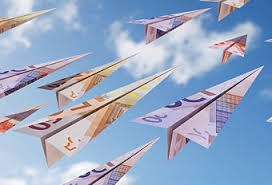By Andrew Warshaw
January 31 – As the winter transfer window in Europe draws to a close, the eye-watering scale of global spending on players has been laid bare by FIFA’s latest Transfer Market Report.
Once again, several records have been eclipsed with $6.37 billion splashed out during 2017 – up a staggering 32.7% – with English clubs, not surprisingly, the biggest spenders.
Most of the increase in global spending is accounted for by the few at the top: about two thirds (67.4%) of the $6.37 billion spent came from only 50 clubs from 13 member associations.
Since the International Transfer Matching System (ITMS) became mandatory in October 2010, clubs from all over the world have completed 94,000 international transfers of professional players, says the latest report.
Regardless of financial fair play, among the other records is the fact that in 2017, 15,624 international transfers took place, 6.8% more than in the previous year. They involved 13,415 professional players representing 181 different nationalities
Interestingly given the continuing fallout of the Bosman ruling a generation ago – still the bane of chairmen and coaches – the most common type of transfer involved players out of contract, accounting for 65.5% of all international transfers in 2017. The remaining transfers were either loans – a system many in the game would prefer to see outlawed – which accounted for 13.1%.
Among other eye-catching statistics, spending on transfer fees since the very start of TMS is $29.03 billion.
CONMEBOL, despite being the confederation with the fewest number of member associations (10, all of which were involved in transfers in 2017), had the second highest number of clubs involved in transfers, 611 in total, such is the attraction of players particularly from Brazil and Argentina. Brazil was in fact the member association with the most clubs involved in transfers (254).
Whilst English clubs were biggest spenders ($1.6 billion in 2017 – an increase of 19.7%), France came second, ahead perhaps surprisingly of Spain in third. Then came Germany and Italy with China, predictably given its huge financial clout in recent years, being the highest non-European spenders in sixth spot.
Contact the writer of this story at moc.l1751510175labto1751510175ofdlr1751510175owedi1751510175sni@w1751510175ahsra1751510175w.wer1751510175dna1751510175

